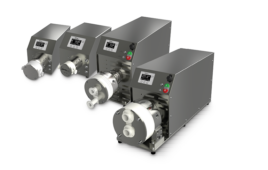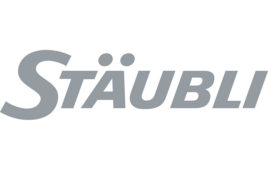By Mike Auerbach
Editor-In-Chief
The desire to design and develop a better system for aseptically filling closed vials has resulted in Aseptic Technologies’ GMP manufacturing facility in Gembloux, Belgium winning the 2009 Facility of the Year Award for Equipment Innovation.
The annual Facility of the Year Award (FOYA) program, sponsored by ISPE, INTERPHEX and Pharmaceutical Processing magazine, is designed to recognize and reward outstanding facilities from around the globe. Six facilities are selected as winners in individual categories and the overall winner is announced at ISPE’s Annual Meeting in November.
Market Drivers Lead To The Crystal Closed Vial Technology
In 2002 Aseptic Technologies saw the need to develop and launch a completely revolutionary way of manufacturing and filling closed vials. At the time of the facility’s conception there was still much room for improvement of aseptic operations; as several accidents were being recorded each year due to injection of contaminated products. This risk for the patient had been exacerbated by requests from various governmental organizations, including the FDA, to withdraw preservatives such as thimerosal from products for babies and pregnant women. The other main driver was the complexity of the glass vial filling process. Aseptic filling is an inherently complex process due to vial component preparation (WFI washing, hot air tunnel sterilization), high speed stoppering and aluminum cap crimping.
As there was nothing like it currently available, Aseptic Technolgies had to develop the process completely in-house. As Benoît Verjans, Aseptic Technologies’ Commercial Director explains, "We developed the technology by ourself. The technology was just a drawing on a paper in 2002 and we succeeded in being approved in less than 5 years."
So – How Does It All Work?
The Crystal® Closed Vial Filling System (CVFS) technology consists of a ready-to-fill vial which is supplied clean and sterile to the pharmaceutical manufacturer. To obtain a clean and sterile vial, both the vial body, made of cyclo-olefin copolymer (COC), and the thermoplastic elastomer (TPE) stopper are molded in clean room Class 100/Grade A/ISO 5 clean room and directly assembled by robot. To ensure sterility, the container is gamma-irradiated prior to delivery to the pharmaceutical manufacturer.
The filling process of this ready-to-fill container consists of a needle piercing the stopper and dispensing the liquid. After the needle is withdrawn, the piercing trace is laser resealed to restore closure integrity. A cap, designed to keep the stopper surface protected until use by the doctor, is then placed by snap fit. All these operations are performed inside a Closed Vial Filling System (CVFS) which ensures a permanent Class 100/Grade A/ISO 5 environment around filling operations. This new and unique process eliminates many of the traditional vial and stopper preparation steps such as washing, siliconization and sterilization.
Three Big Advantages
The Crystal Closed Vial filling technology offers three major advantages compared to traditional glass vial filling technologies.
Better sterility assurance level and reduced particle presence —
The higher sterility assurance level is obtained through the concept of keeping the vial always closed. This one key feature strongly reduces the risk of having a contaminant penetrating the container. Conversely, the classic filling process for glass vials requires the exposure of opened vials and free stoppers to the environment. This exposure can last up to few hours when large batches of stoppers are used. Such exposure increases the risk that a contaminant can enter the inside of the vial if all necessary precautions are not fully taken. The Crystal Closed Vial filling technology generates a very limited amount of particles, about 50% less compared to the traditional glass vial filling process. As Verjans points out, "The technology in itself is designed to prevent contamination by keeping the container permanently closed."
Contributing to the enhanced sterility is a newly designed capping technology. The entire stopper surface is protected by a circular rib, located on the inner face of the cap, which creates additional closure integrity. A significant amount of patient contaminations are due to the absence of or ineffective disinfection of the stopper surface when product is collected. The maintenance of the stopper surface in conditions observed inside the barrier prevents bacterial proliferation on this surface.
Simplified filling operations
—
The second major advantage of the CVFS is the simplification of the filling operation. The technology has simplified and in some cases eliminated many traditional process steps:
• Washing stations for both vial bodies and stoppers are unnecessary.
• As there is no need for washing, there is no need for WFI on the filling line, eliminating a major source of expense, validation work and risk of batch reject.
• Sterilization tunnels with their associated high energy consumption of energy and validation issues are also eliminated, as is the cooling zone.
• The stoppering station, a source of frequent short stops is replaced by the laser re-sealing station.
• The capping station, using simple snap fit technology is simpler and more productive than the crimping station used for the aluminum cap.
Only two new technologies are added to the filling process which are not present on a traditional glass vial filling line: the e-beam sterilization and the laser resealing stations. These new technologies have been designed to ensure full compliance with the most advanced Good Manufacturing Practices (cGMP) requirements such as process analytical technology (PAT). A filling line can be installed in a building just equipped with electricity. WFI is just needed to prepare the filling equipment in the washing room and to autoclave the needle assembly.
As far as the operating environment is concerned, the CVFS allows operation in a Class 100,000/Grade C / ISO 8 clean room; validation work and the operating complexity are strongly reduced compared to isolators.
Secured supply chain and easier handling
—
The innovative design of the vial results in improving the supply chain until administration of the product to the patient. First, by the use of COC, the vial body is very resistant to shocks and can not be easily broken. This not only confers a higher safety assurance for the operators but also for medical practitioners, especially when potent products are used. In addition, the stopper has been designed to have a large and flexible piercing area and to favor the complete collection of the liquid by avoiding recess areas. These two characteristics make practitioners feel more comfortable when collecting the liquid.
Also, as counterfeiting becomes an increasing threat to the pharmaceutical industry, injectables are a clear target due to their high price. The closed vial has been designed to introduce anti-counterfeiting technologies. First of all, the vial, with its specific and unique shape is much more difficult to copy. Second, the vial allows on-line coding before any operator can have access to the vials. Two ways of coding are possible:
• RFID coding: an RFID chip can be installed under the cap. When the capping occurs, the RFID is secured by the snap fit assembly of the cap with the top ring. A coding machine can be installed inside the line which will definitively mark the vial before it exits the line. The initial coding can not be modified but additional codings can be added to allow vial tracing all along the supply chain. Note that the RFID chip always remains fixed to the vial even after vial opening.
• Laser coding: thanks to the large vertical surface of the top ring, a laser coding can be made either with alpha-numeric characters or with a 2D matrix. Again, this coding can be made inside the filling line.
The key difference with this new process is that the coding can be done on-line whereas coding on glass vials (either by RFID or by laser) are usually done on the labels. Two issues appear due to this delayed coding. First, a mix-up could happen in the stock before labeling and second, a label can be easily transferred to another vial with the coded information.
Seeing Is Believing
As mentioned earlier this new technology does not require a lot of capital investment. But, as is the case with most new technologies and processes – people need to see it in action before they commit to it.
To convince the industry that what they had developed was truly revolutionary, Aseptic Technologies decided to install the first Crystal Closed Vial Filling Line (CVFL) in its own facility and to operate it as a Contract Manufacturing Organization to help their clients get stability data and fill clinical batches.
The facility is located in extension AT02 of the headquarters of Aseptic Technology in Gembloux, Belgium. The site is located in the center of Europe, 60 km away from Brussels, the capital of Belgium and European Community. It is composed of two buildings:
• AT01 which is dedicated to offices, meeting rooms, and workshops
• AT02 which includes a workshop, offices and the filling facility
A filling suite of 400 m² was constructed with all the necessary equipment to perform aseptic filling. The operations performed are:
• Raw materials: reception and storage
• Material preparation: a washing room with double door autoclave is dedicated to the preparation of the filling needle and the tubing attached to it.
• Filling: a Class 100,000/Grade C / ISO 8 clean room is equipped with a CVFL with a capacity of 1,500 vials/hour. This line is able to handle batches from a few thousand up to 20,000 vials per batch.
• Downstream processing: all downstream processing (particle inspection, labeling and packaging) are manually performed. The decision to perform these steps manually was due to the company’s decision to target small batch filling such as stability batches and initial clinical batches. In case of large quantities to be produced, space has been set aside to install small equipment to replace manual operations. Verjans adds, "As the technology is very simple and does not require specific side technologies, it is very easy to add additional capacity even if this is out of concept for our line."
• Quality Control laboratory: the few in-process quality control operations are performed inside the laboratory. The quantities of tests are very limited thanks to the simple technology.
The decision to construct the facility was made in March 2005. 15 and 19 months after (June and October 2006), the facility had its first preliminary inspection by the Belgian authorities. A complete set of validation data was provided in January 2007, only 22 months after the initial construction decision was made. Approval was granted in July 2007.
Asked about any challenges encountered during construction, Verjans commented, "no specific challenges were met, this was obtained thanks to simplicity of the technology."
Industry Reaction
As with other technologies that break barriers, the CVFS facility has received its fair share of interest from the pharmaceutical manufacturing facility. "Many companies are currently investigating our technology," Verjans states. "GSK Biologicals, our parent company has already launched several stability studies. They have also acquired a large-scale production line (36,000 vials/hour) to be fill vaccines. Clinical trials have already been conducted successfully in our container."
Reason for winning
It’s not very often new technology can be called simple – but perhaps this was what caught the attention of the FOYA judges. Asked why he thought the judges selected his facility, Verjans simply stated: the innovations of our Crystal technology.?



